I enjoy mazes, both solving them and making them!
This maze is made with Caution Tape, stapled to wooden stakes hammered into the ground. It is the same idea as a Corn Maze, but fairly easy and inexpensive to set up. Here is my 4 year old enjoying walking through some of the maze paths
Why We Made the Maze:
Designing the Maze:
I enjoy making chalk mazes on the sidewalks around our apartment in the summer time. The local children like to trace out the paths, and solve the maze. When I make a mistake with the chalk, I simply pour a little water on the spot, and redo that section.
For the caution tape maze, some more planning is required. The better the preparation at the beginning, the faster and more accurate construction is later.
I activate the snap feature in Draw, to force my lines to stay on the grid pattern. First, I draw thin vertical and horizontal lines over the full area to help locate where the walls will be placed. Then, I bump up the line thickness, and start to draw where the walls will go.
- The entrance and exit are close together: This is to corral children, sending them back to parents waiting at the entrance.
- There is one, and only one, correct path.
- It must fit in the planned area.
- It should be a little challenging, even for the older kids: In practice, this means that a lot of the false paths are long and twisty enough to fool kids into thinking they might be going the “right” way.
My kids provide good feedback during the design process. At first, they tell me thing like: “Dad, your maze is too predictable!” After several iterations, I get an encouraging “It is a little challenging!”, or notice that my 9 year old is having a little trouble solving it.
- At all wall end locations
- At all corners
- At intervals along long straight sections of wall. This keeps the caution tape from drooping. I used a maximum spacing of 3 squares, or 9 feet between stakes.
Now that everything is complete, I have a map that can be followed for the maze construction:
Material Needed:
- Caution Tape – This maze uses about 1540 ft. of tape; Two rolls of 1000′ should be adequate. I use the 3″ wide plastic type, which sells for about $8.00 a roll. Total Cost: about $16.00
- Wood Stakes – The stakes are 1″ x 1″, about 2 feet long, cut into a wedge at one end. If you know a carpenter or builder, they probably have a -lot- of short pieces of scrap wood that can be used for this. You might even be able to get them to cut them to length for you! (Thanks, Bob Munroe!) This maze needs about 250 stakes.
- Staples – I prefer using a large staple gun with T50 staples. A box of 1250 staples will be about $3.50
- Powdered Chalk – I use about 4 bottles of orange powdered chalk; the kind used to refill snap lines. This is not strictly necessary, but helps to speed up the construction process. Each bottle costs about $1.40, so $5.60 total for the 4 bottles. The chalk puts a bright temporary dot on the grass, that washes out completely when it rains.
Tools Needed:
- Tape Measure – At least 100′ long.
- Twine – about 250′. This should be less than $5.00 if purchased.
- Hammers
- Staple Guns
- Knife or Scissors – this is to cut the twine.
- Large Metal Spike – not strictly necessary, but nice to have in our rocky New England soil, to poke a preliminary hole for the stake when the spot is rocky.
Maze Construction:
The maze is easier to make with helpers. This maze took three adults, a teenager, and a 9 year old about 4 hours to construct. The steps are:
- Lay out the four corners of the maze
- Mark the beginning and the end of all the short grid lines
- Along each grid line, mark where a stake should be placed
- hammer all the stakes in place
- staple the caution tape to the stakes
Laying out the maze corners:
This is my technique for laying out the maze corners. The trick is to get all the corners to be square.
Hammer one corner stake into the ground. All the other corners will be placed with this first stake as a reference.
Tie some twine to the first stake. Measure out 96 feet and cut the twine. Tie a second piece of twine to the second stake. Measure out 60 feet and cut the second piece. Have helpers hold the stakes steady, while you pull both pieces of twine straight – don’t use too much force, just enough to keep the string straight. Walk back and forth, until both pieces of string meet at the end and are straight. This is the location for the third stake.
Exchange the pieces of twine between the stakes. Move back and forth until both strings are again straight and taught. This is where the fourth stake is placed.
Laying out the beginning and ends of the short grid lines:
Lay the tape measure between two posts on one long side. Use the chalk to mark a spot in the grass every 3 feet along the tape measure.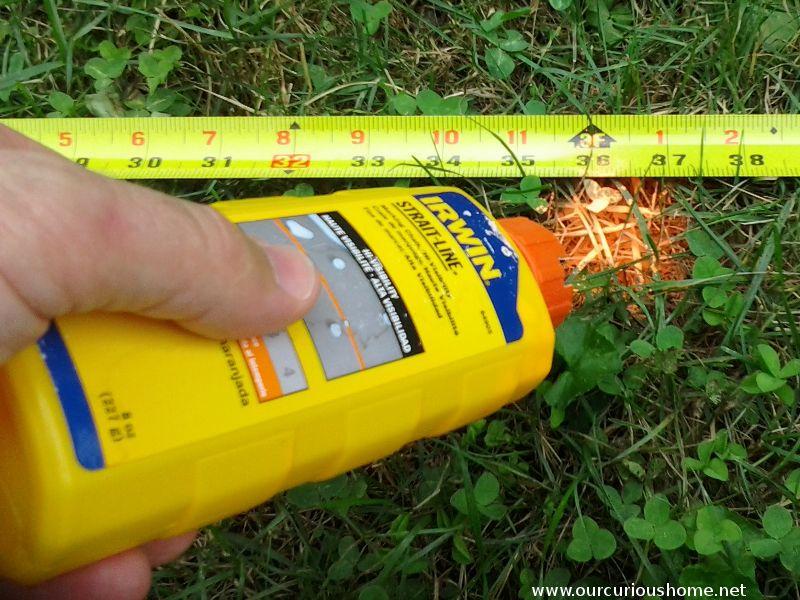
Repeat on the second long side of the maze. You should now have two lines of chalk marks, at two opposite sides of the maze.
Marking the Stake Locations:
- Start at the entrance end of the maze. Lay the measuring tape down between the corresponding orange dots at each end of the first grid line.
- At each stake location shown on the map, put some chalk on the grass to mark the location.
- When the first grid line is finished, move the measuring tape to the next short grid line, 3 feet away.
- Repeat the process along the length of the maze.
Of course, you could simply drive the stakes into the grass, instead of marking the locations with chalk. However, marking allows two people to quickly indicate where the stakes are placed, allowing others to hammer in stakes.
Hammering the Stakes
Hammer the stakes firmly into the ground, at locations indicated by the chalk marks.
Stapling the Caution Tape
Work off of the maze grid map, stapling the caution tape to each stake it passes. When the stapling is done, go back and check the actual maze against the map.

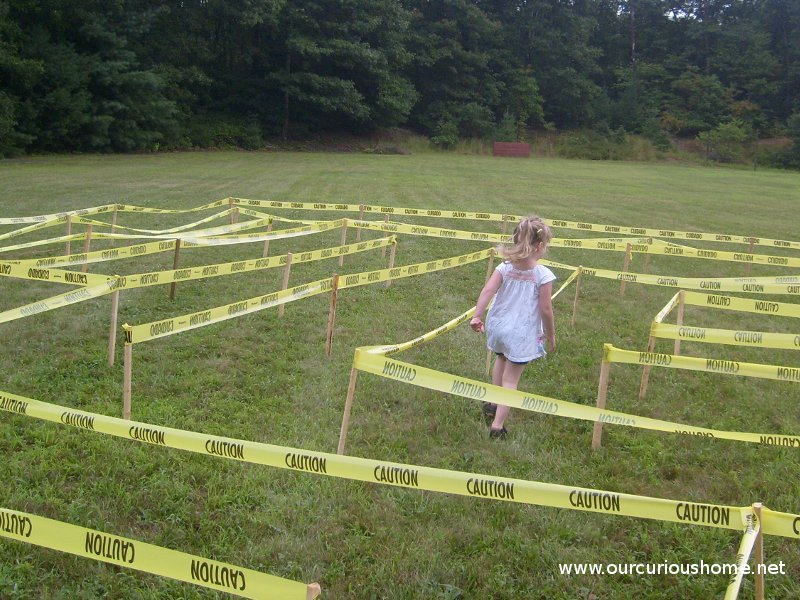
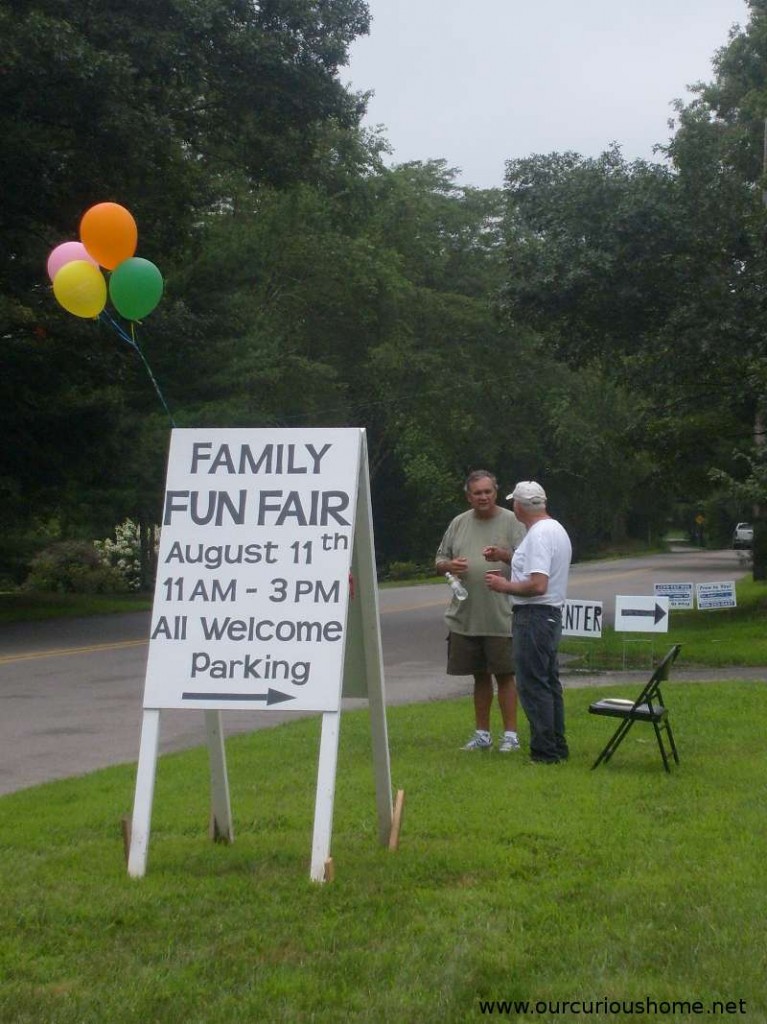
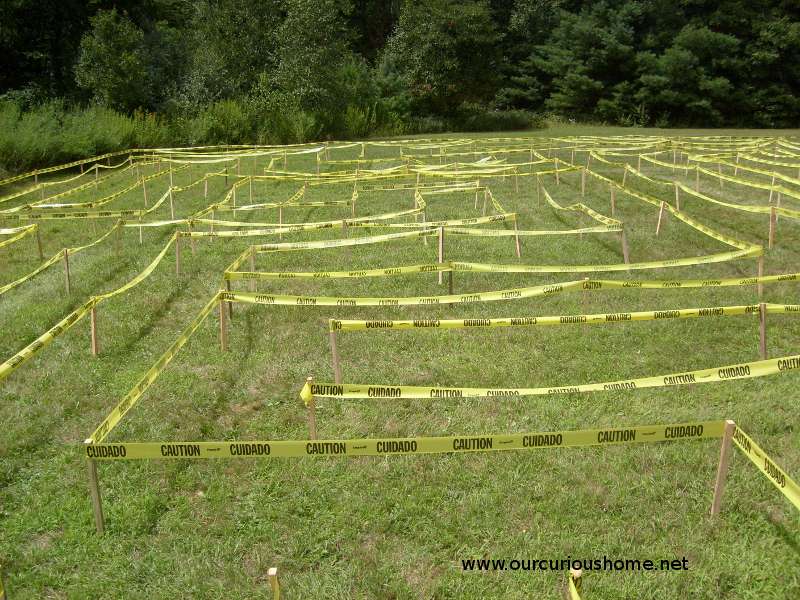
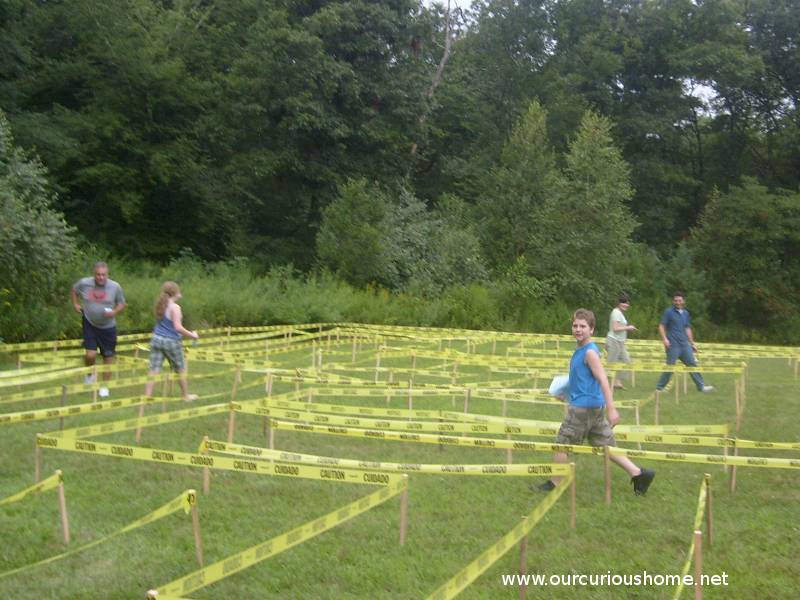
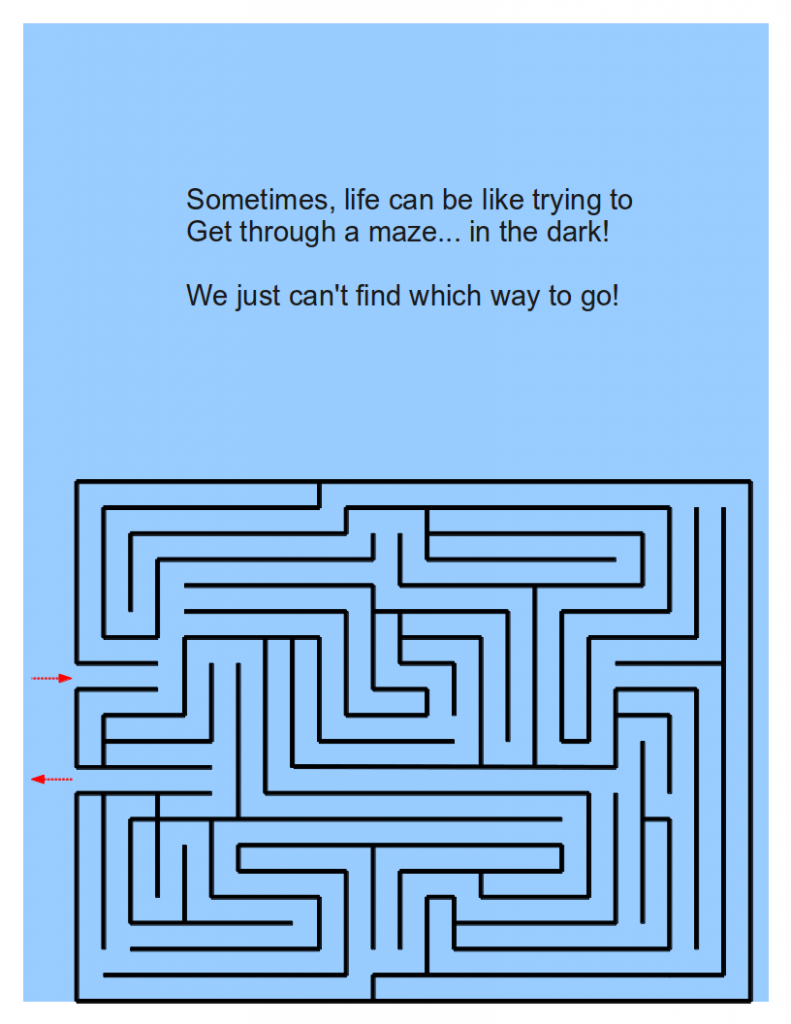
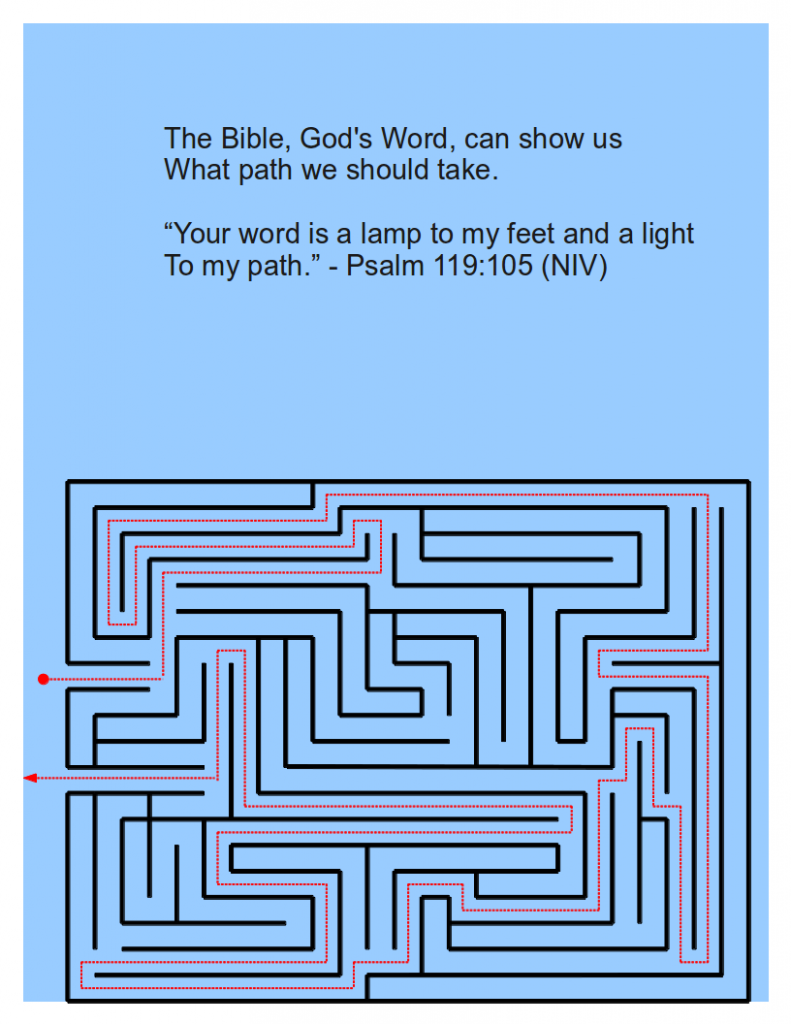
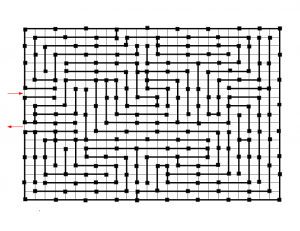
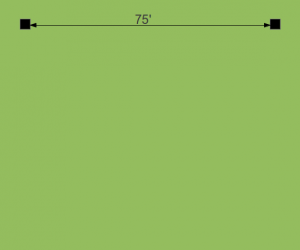
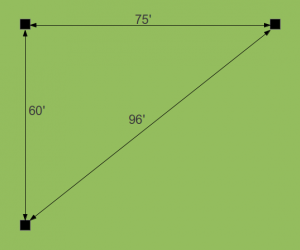
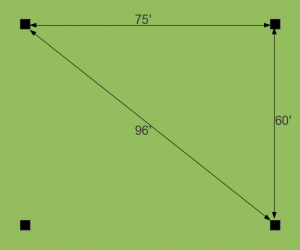
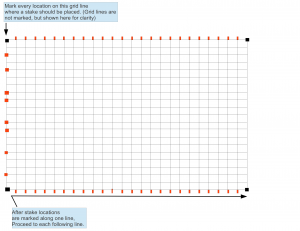
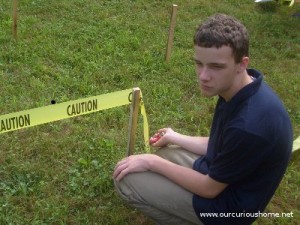
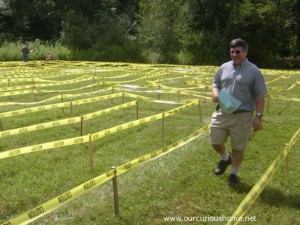
Pingback: DH Guest Post: Caution Tape Maze Revisited, Part I | Our Curious Home
2014 Update: See my new post on caution tape maze design on this blog site.
Dan – excited to make this maze for our festival coming up. Do you have a pdf of the maze handout on white paper so I can print it easily?
What a wonderful, and I would guess, relatively inexpensive activity. Great detailed plans of how to set it up! Thanks
Pingback: オリジナルの迷路を手作りしてみよう!迷路づくりのアイデア6選 | foosee[フーシー]
Dan – thanks so much for posting the full instruction here, diagrams and all. My friends and I set up the maze to your precise specs and it turned out a fun for many last Saturday on a gorgeous fall afternoon.
Great idea and great instructions!
Awesome! Glad you could use it!
Hi there,
Thanks for these detailed instructions! We’re having a music festival on my farm and would like to make one of these. Would you be able to estimate approximately how much caution tape it took to make this maze? We were thinking about using something a little more substantial than caution tape, but would like to get an estimate on how much we need to estimate the price and see whether it would be affordable for us.
If you could shoot me an email I’d be super appreciative!
Really neat and simple idea, and thanks for sharing!
Wynne
Wynn,
A music festival on a farm – sounds like a lot of fun!
This 60′ x 75′ maze took about 1540 feet of caution tape and 250 stakes.
The later mazes were 60′ x 90′, taking about 2000′ of caution tape and about 300 stakes.
I use the cheap 3″ caution tape from our local home improvement store, at about $8.00 a roll of 1000 ft. I buy a roll more than I need, to have enough tape for repairs during the day. The left over tape goes in a box until next year. I also need lots of staples.
Most of the stakes were cut for me from scrap lumber, from a farmer in my church. We pull them up every year, and
store them in our church shed.
I find the biggest expense in making the maze, is feeding the teenagers that help me make it! The help they give me more than pays for all the burgers!
See these posts for more details:
http://www.ourcurioushome.net/2014/08/03/dh-guest-post-caution-tape-maze-revisited-part-i/
http://www.ourcurioushome.net/2015/09/10/dh-guest-post-caution-tape-maze-revisited-part-ii/
I hope this helps!
-Dan (Christine’s DH)
Here is the latest design, done in 2015:
http://www.ourcurioushome.net/2015/09/11/august-15-2015-family-fun-fair-caution-tape-maze/